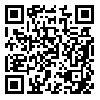Volume 6, Issue 1 (2015)
LRR 2015, 6(1): 111-129 |
Back to browse issues page
Download citation:
BibTeX | RIS | EndNote | Medlars | ProCite | Reference Manager | RefWorks
Send citation to:



BibTeX | RIS | EndNote | Medlars | ProCite | Reference Manager | RefWorks
Send citation to:
Rouhi A, Heidari A. Light verb Constructions in Azeri-Turkish/Persian Code-switching based on the Matrix Language Frame Model. LRR 2015; 6 (1) :111-129
URL: http://lrr.modares.ac.ir/article-14-12233-en.html
URL: http://lrr.modares.ac.ir/article-14-12233-en.html
1- Assistant P Professor, Department of ELT, Payam Noor University, Tehran, Iran
2- Ph.D. of Linguistics, Mohaghegh Ardabili University, Ardabil, Iran
2- Ph.D. of Linguistics, Mohaghegh Ardabili University, Ardabil, Iran
Abstract: (7253 Views)
The present paper was an attempt to inquire into the morpho-syntactic features of light verb construction in Azeri-Turkish/Persian intra-sentential code-switching, employing the matrix language frame model. The analysis of data obtained from the interactions between bilingual teachers (n = 4) and students (n = 100) and from the conversation of 8 other bilingual teachers in a primary school revealed that Persian finite verbs do not participate in Azeri-Turkish morpho-syntactic frame simply because such verbs are [+ thematic role assigner] and carry more syntactic baggage. Persian preverbal elements, however, appeared to combine with Turkish light verbs showing more resistance to the syntactic frame of Azeri-Turkish in causative structures. Activation of embedded language preverbal element at predicate-argument level not only indicates the matrix language being far from the sole source for the grammatical shaping but also falsifies the independence of syntax from lexicon.
Keywords: Intrasentential code-switching, Matrix language frame model, Light verb construction, Matrix language, Embedded language, Persian, Azeri-Turkish
| Rights and permissions | |
 |
This work is licensed under a Creative Commons Attribution-NonCommercial 4.0 International License. |






